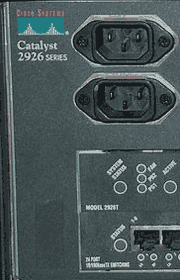Process Architecture
Definition: Process Architecture is a schematic that shows the ways
in which the business processes of an enterprise are grouped and inter-linked.
| |
|

|
For an enterprise to function effectively it is vital that managers understand
the structure of business processes that allows inputs (raw materials,
intellectual capital, etc.) to be turned into outputs (ideally, profit). Without
this understanding the management level will be flying blind with no way of
making informed decisions about the direction of the enterprise.
Enterprises achieve their objectives through the establishment of and adherence
to a set of optimised
business processes (i.e. a set of catalysing steps by
which inputs can be converted to outputs). However, processes do not exist in
isolation.
Rather, there are different levels of process. At its most basic level, a
process is a discrete unit of work that has a beginning and an end, and produces
some sort of output. An example of a basic process could be the cooking of a
burger in a restaurant. The patty goes on the grill, and a few minutes later it
is cooked. Simple, yes?
Not so. While the cooking of a burger may seem like a simple process, it relies
on the success of a whole number of inter-linked processes to take place. The
patty needs to be processed at a meat rendering plant and transported to the
restaurant before the cooking process can take place. In addition to these basic
processes there are any number of others that must go on behind the scene to
result in a cooked burger – quality control, purchasing, kitchen maintenance,
and a hundred other related processes.
These basic processes can all be grouped together into process systems –
high-level, inter-dependent processes that require the success of each other in
order to achieve their objectives.
Benefits of Process Architecture
Process architectures provide visual representations of the processes and
process systems within an enterprise, offering executives and planners a
birds-eye view of the activities of the enterprise as a whole.
 The benefits of this should be clear. By gaining an overall view of the
enterprise it becomes possible for planners to identify its strengths and
weaknesses, allowing them to identify areas in need of improvement and offering
them the ability to develop strategy to best exploit the strengths of the
enterprise. The benefits of this should be clear. By gaining an overall view of the
enterprise it becomes possible for planners to identify its strengths and
weaknesses, allowing them to identify areas in need of improvement and offering
them the ability to develop strategy to best exploit the strengths of the
enterprise.
* Navigation Guide
A process architecture serves as a road map by which process planners can devise
best practices for high level and basic processes to ensure that all processes
are aligned with the overall business strategy.
* Automation Possibilities
By using process management software (from such vendors as InfoSys and Osellus)
to develop a comprehensive process architecture schematic it is possible to
identify processes (or steps within processes) that could be effectively
automated to reduce the burden on staff members and increase speed and
efficiency.
* Simplification
Process Architectures highlight redundant and needlessly complicated processes,
enabling management to prune those areas and streamline the business.
* Reduced Cost
Obviously, this simplification and automation of processes should, ideally,
result in reduced operational costs for the enterprise.
* Faster Reactions
Simplification and increased reliance on automation should also result in
quicker reaction to changing market conditions, allowing executives to quickly
adapt existing processes to new conditions.
*
Training Benefits
A visual representation of the business practices and operations of an
enterprise can be a powerful training tool for new staff. By using process
architectures to simplify business processes it can be possible to use
architecture diagrams to reduce training time.
* Strategy Creation
A comprehensive overview of the operations of an enterprise can be an invaluable
aid in the creation and modification of
business strategy. By using the
architecture to identify strengths and core competencies executives can
determine how to best move the enterprise forward.
* Costing
Process Architectures can serve to highlight areas of wastage, in which process
outputs do not justify investment. These processes can then be remodelled.
Architectures can also predict the cost of alterations to processes (i.e. costs
related to additional use of IT systems, increased labour costs, etc.).
* Impact Prediction
Perhaps most importantly, process architectures can offer executives an insight
into how processes interrelate, and how modifications to one process may affect
down line or concurrent processes. Only by understanding the impact a process
alteration will have on its surrounding processes can executives truly determine
the best course of action.
Further information regarding process architecture can be found at the
University of the West of
England (pdf) and the University of
Strathclyde.
|

 The benefits of this should be clear. By gaining an overall view of the
enterprise it becomes possible for planners to identify its strengths and
weaknesses, allowing them to identify areas in need of improvement and offering
them the ability to develop strategy to best exploit the strengths of the
enterprise.
The benefits of this should be clear. By gaining an overall view of the
enterprise it becomes possible for planners to identify its strengths and
weaknesses, allowing them to identify areas in need of improvement and offering
them the ability to develop strategy to best exploit the strengths of the
enterprise.